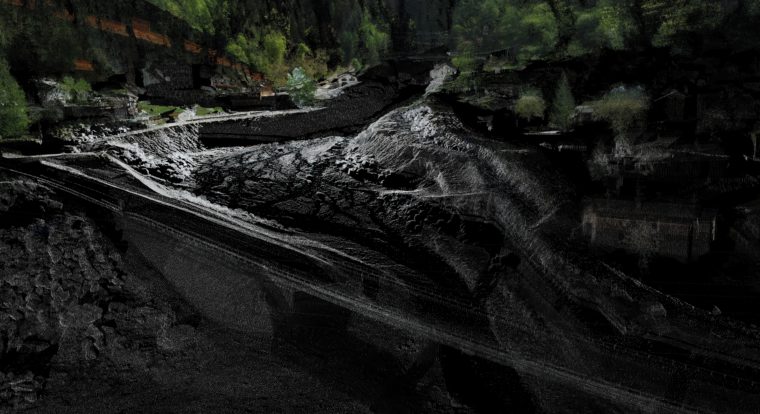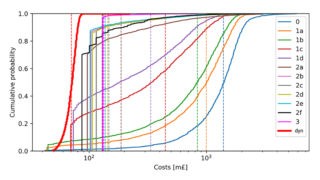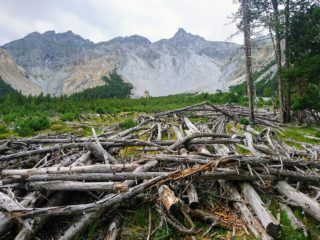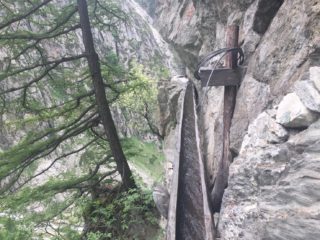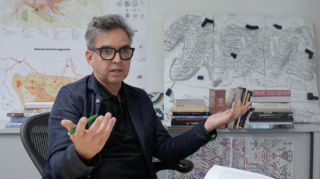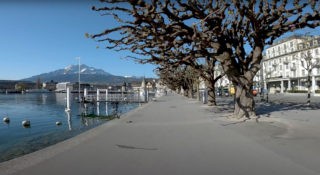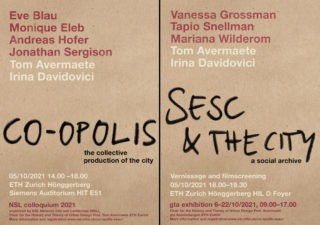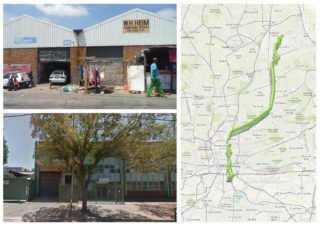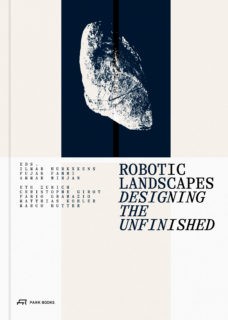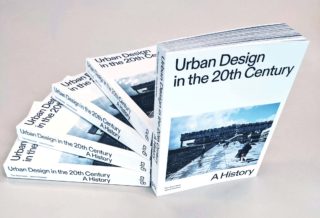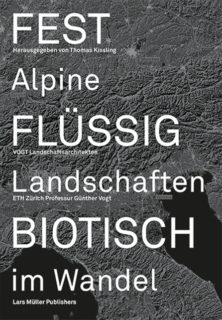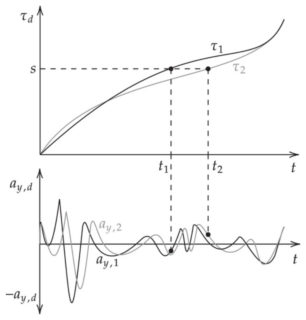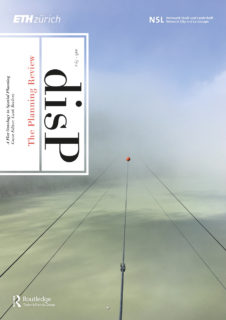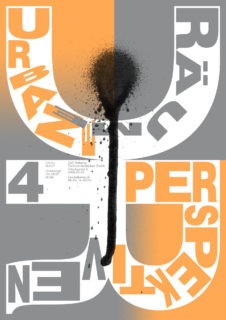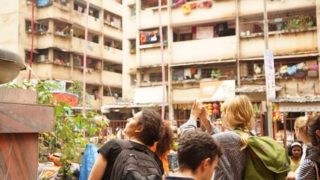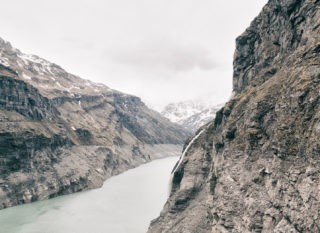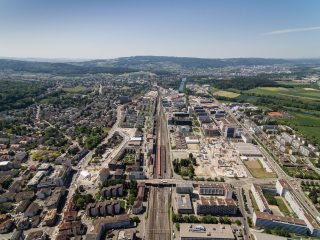Sehr geehrte Leserinnen und Leser
Die Interaktion Mensch – Umwelt ist beidseits risikoreich. Wir sprechen in unserem Dezember-Newsletter von den Funktionen alpiner Landschaften und der Infrastruktur für unsere Wasserversorgung. Und: wir stellen Ihnen Hubert Klumpner, den neuen NSL Leiter vor.
Wir wünschen viel informatives Lesevergnügen!
Fujan Fahmi | landscape architecture, Prof. Christophe Girot; Dr. Ilmar Hurkxkens | Architecture and Digital Fabrication, Profs. Gramazio & Kohler
The effects of climate change are leading to an increase in extreme natural events and danger in Alpine landscapes in Switzerland. Today, the Swiss territory is already being hit more often by floods, debris flows, and landslides. This increase in natural risks tells us about the fragile balance that exists in our ecosystems. Two centuries of river remediation projects in mountain streams and major rivers in Switzerland have led to a false sense of security.
Mehr
Prof. Dr. Bryan T. Adey, Dr. Claudio Martani | Infrastructure Management; Prof. Dr. Jürgen Hackl | University of Liverpool, Civil Engineering and Industrial Design
The infrastructure required to provide sufficient high quality drinking water to urban areas over long time horizons is highly uncertain. The use of the real options method, which accounts for future uncertainty and considers management flexibility over time, can significantly improve the evaluation of water supply resilience enhancing investments when compared to traditional methods.
Mehr
Dr. Ana Stritih, Prof. Dr. Adrienne Grêt-Regamey | Planning of Landscape and Urban Systems (PLUS)
Mountain forests provide many essential ecosystem services, such as protection from natural hazards, carbon sequestration, habitats for rare species, and spaces for recreation. However, these forests are experiencing more and more natural disturbances, including windthrows, bark beetle outbreaks, and forest fires, which may jeopardize their capacity to provide ecosystem services.
Mehr
Nicole de Lalouvière | History and Theory of Urban Design, Prof. Dr. Tom Avermaete
Swiss agricultural commons have overseen the management of pastures, forests, and water in the Alps for centuries. In Canton Valais, the historic irrigation systems have shaped the cultural landscape of the region as a whole. The resilience of these channels rests in part on their ability to mitigate risk, which is achieved through a particular relation to the landscape.
Mehr
Hubert Klumpner ist für zwei Jahre neuer Leiter des Netzwerks Stadt und Landschaft (NSL). Er spricht von den bevorstehenden globalen Herausforderungen und deren Übersetzung in konkrete Projekte, die als logische Konsequenz von Studierenden der Bereiche Architektur, Städtebau und Raumentwicklung in Zusammenarbeit angegangen werden.
Mehr
Lindsay Blair Howe | ETH Zürich/UniLi; Hanna Hildbrandt | UZH; David Kaufmann | ETH Zürich; Philippe Koch | ZHAW
upZ (urban publics Zürich) fördert den Dialog zwischen Stadtforschung, Stadtgesellschaft und Stadtpolitik. Sie verfolgen zwei Ziele: Erstens wollen sie international ausgerichtete urbane Forschung und Praktiken in Zürich verankern und weiterentwickeln. Zweitens wollen sie Verbindungen zwischen städtischen Akteuren in Forschung, Politik, Aktivismus, Hochschulen und Zivilgesellschaft stärken, um den öffentlichen Dialog über dringende städtische Fragen zu fördern.
Prof. Dr. Kay Axhausen | Verkehrsplanung; Prof. Dr. Beat Hintermann | Uni Basel, Wirtschaftswissenschaften
Verkehrsteilnehmende verändern ihr Verhalten, wenn sie für Kosten ihrer Mobilität aufkommen müssen, die bisher die Allgemeinheit bezahlt. Das zeigt das bisher grösste Pricing-Experiment im Schweizer Agglomerationsverkehr von Forschenden der Universität Basel, der ETH Zürich und der ZHAW.
Artikel in den ETH News lesen
In einem Dialog für Praxis und Hochschulen nahm das Netzwerk Stadt und Landschaft (NSL) der ETH Zürich am 11. November im Volkshaus Zürich eine Standortbestimmung für die räumliche Entwicklung in der Schweiz vor. Ausgangspunkt bildeten Erkenntnisse aus der Pandemiesituation, Hintergrund der Klimawandel. Die Tagung war ein Beitrag zur Diskussion um drängende Aufgaben und mögliche Lösungsansätze.
Mehr
Video now online!
As urbanization intensifies all over the world, so do contestations over how city space is produced. Citizens, politicians, urban designers and architects become increasingly aware of the fact that the city can no longer be solely developed as the playing field of private interests or of state ideologies. Instead, they propose to look upon the production of the city as a ‘common matter’, guided by common codes and the care for common resources.
Mehr
Prof. Hubert Klumpner & Dr. Michael Walczak | Architecture and Urban Design; Prof. Dr. Reza S. Abhari | Laboratory for Energy Conversion
Recently launched UTPS multifaceted project includes a currently establishing work and event space «Urban Design Studio Sarajevo»; a decentralized research and data collection laboratory «Studio Mobil», a digital twin of the whole City of Sarajevo using data-driven, large-scale, agent-based urban simulations for the new Sarajevo Urban Plan 2040 decision-making processes; and small-scale and prototypical architectural interventions. Knowledge exchange is ensured with the University of Sarajevo and professionals.
Mehr
Dies ist eine Auswahl. Eine vollständige Liste finden Sie in der ETH Zürich Research Collection.
Lindsay Blair Howe
Despite the ‘mobility turn’ in urban studies, there is surprisingly little research into the role people’s everyday movements play in driving urbanisation processes.
Mehr
Ilmar Hurkxkens, Fujan Fahmi, Ammar Mirjan (Editors)
Robotic earthmoving equipment is dramatically changing the way landscapes can be formed and maintained. Landscapes evolve through constantly changing conditions, and a dynamic response to natural environments can never be considered final.
Mehr
Tom Avermaete, Janina Gosseye
Our time is an urban age. More people live in cities than ever before, cities are growing larger and denser than ever, and urbanity has reached unprecedented levels of complexity.
Mehr
Thomas Kissling (Hrsg.)
Anders als vielfach angenommen, sind die Alpen kein unverrückbares, alles überdauerndes Massiv, sondern ein dynamischer und sensibler Organismus.
Mehr
Alexander Genser, Roland Spielhofer, Philippe Nitsche, Anastasios Kouvelas
Increased travel with automated vehicles (AVs) in the future requires that we ensure that the ride is comfortable for its passengers.
Mehr
Dies ist eine Auswahl. Alle Artikel finden Sie auf der Seite Aktuell.
28. Oktober 2021 bis 13. März 2022 | Ausstellung | Zentrum Architektur Zürich ZAZ, Höschgasse 3, 8008 Zürich.
Mehr
Applications: 1 January to 30 April 2022.
Mehr
Symposium 12. – 13. Mai 2022.
Forschungsworkshops, runde Tische und Keynote.
Öffentlicher Anlass, Anmeldung bis 29. April 2022.
Klimawandel, Energiewende, Urbanisierung und Industrialisierung haben und werden enorme Auswirkungen auf die alpine Landschaft haben. Am Schnittpunkt Europas gelegen, müssen die Veränderungen dieser recht fragilen Umwelt durchleuchtet werden.
Mehr
Prof. David Kaufmann, Dr. Markus Nollert, PD Joris Van Wezemael | Raum- und Landschaftsenwicklung
Politik und Planung | Raum und Technologie | Design und Raumplanung
Mehr
Redaktionsteam
Isabelle Fehlmann, Institut für Landschaft und Urbane Studien (LUS), Landschaftsarchitektur
Melanie Fessel und Bojana Papic, Institut für Landschaft und Urbane Studien (LUS), Städtebau
Claudia Gebert, Koordinationsstelle NSL, Chefredaktion
Maarten Van Strien, Institut für Raum- und Landschaftsentwicklung (IRL)
Jan Westerheide, Institut für Landschaft und Urbane Studien (LUS), Städtebau
Caroline Winkler, Institut für Verkehrsplanung und Transportsysteme (IVT)
